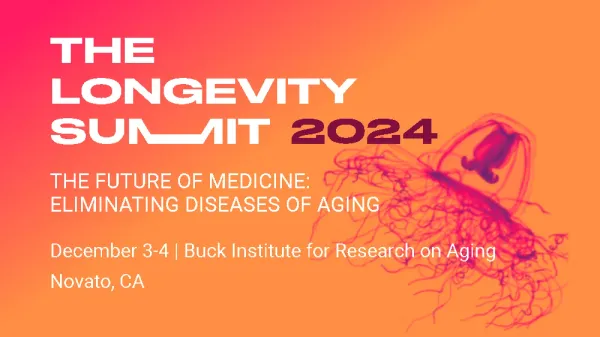Mitochondria and Longevity: Tackling Mitochondrial Dysfunction for a Healthier, Longer Life
This article discusses the role of mitochondria in aging and the new therapies, such as NAD+ boosters and mitochondrial antioxidants, that can improve mitochondrial health and extend lifespan.

Mitochondria, long known as the powerhouses of the cell, are increasingly at the center of a revolution in aging research. These small organelles generate adenosine triphosphate (ATP), the cell's primary energy source. But as we grow older, our mitochondria begin to malfunction, a decline that is now recognized as a significant driver of aging and age-related diseases. Researchers are racing to develop therapies that can counteract this process, hoping to unlock new ways to extend both lifespan and healthspan.
The Role of Mitochondria in Aging
Scientists have long understood the importance of mitochondria for energy production, but recent discoveries have revealed a darker side to their role in aging. As cells age, mitochondria begin to accumulate damage. This manifests in several ways: mutations in mitochondrial DNA (mtDNA) due to oxidative stress, a decrease in mitochondrial biogenesis (the production of new mitochondria), and impaired mitophagy—the process of removing damaged mitochondria.
Aging mitochondria also become less efficient at producing ATP, reducing cellular energy levels. Additionally, they generate increased levels of reactive oxygen species (ROS), harmful molecules that can damage cellular components and contribute to the aging process.
"The mitochondrial theory of aging is now one of the leading hypotheses in the field of longevity research," says Dr. Maria Espinosa, a biologist studying cellular aging at a major research institute. "If we can prevent or reverse mitochondrial dysfunction, we may be able to slow the entire aging process."
The Decline in Mitochondrial Function
As individuals age, their mitochondrial performance declines. This is due, in part, to oxidative stress damaging mtDNA, as well as the reduced capacity of cells to generate new mitochondria. Another consequence is the inefficient production of ATP, leading to fatigue and lower energy levels. These factors together have driven a surge of interest in therapies that target mitochondrial health.
Key changes in aging mitochondria include:
- Accumulation of mtDNA mutations: Damage from oxidative stress leads to mutations that impair mitochondrial function.
- Decreased mitochondrial biogenesis: The cell's ability to produce new mitochondria declines, reducing energy production capacity.
- Increased ROS production: Mitochondria produce more reactive oxygen species as they age, leading to further damage to cells.
- Impaired mitophagy: The process that clears damaged mitochondria from cells becomes less efficient, leading to a buildup of dysfunctional mitochondria.
Pioneering Therapies to Combat Mitochondrial Decline
With the growing understanding of mitochondrial dysfunction in aging, researchers are now exploring a variety of therapies aimed at preserving or enhancing mitochondrial health. Some of the most promising approaches are already in clinical trials.
Mitochondrial-Targeted Antioxidants
One approach involves targeting mitochondria directly with antioxidants. Unlike general antioxidants, which work throughout the body, mitochondrial-targeted antioxidants such as MitoQ, SkQ1, and SS-31 are designed to neutralize oxidative stress within the mitochondria themselves. By reducing oxidative damage, these therapies offer a more focused method of protecting mitochondrial function.
"Traditional antioxidants have had limited success in slowing aging, but by directing these molecules specifically to mitochondria, we can potentially offer greater protection against cellular damage," says Dr. Espinosa.
NAD+ Boosters
Another promising avenue involves boosting levels of NAD+ (nicotinamide adenine dinucleotide), a crucial coenzyme in mitochondrial energy production. NAD+ levels decline with age, impairing mitochondrial function. Compounds such as NMN (nicotinamide mononucleotide) and NR (nicotinamide riboside) are being studied for their ability to restore NAD+ levels and enhance mitochondrial efficiency.
"Boosting NAD+ levels could help restore mitochondrial function and delay age-related decline," says Espinosa. "This is one of the most exciting areas of current research."
DNA Repair with CRISPR
Perhaps one of the boldest approaches involves using CRISPR technology to repair damaged mtDNA. Mitochondrial DNA is more vulnerable to damage than nuclear DNA, and its repair mechanisms are less efficient. By editing or repairing mtDNA, researchers hope to prevent mitochondrial dysfunction and extend the lifespan of cells.
"CRISPR offers the possibility of directly removing harmful mutations from mitochondrial DNA," explains Dr. Espinosa. "While still experimental, this approach could revolutionize how we treat age-related diseases."
Exercise Mimetics
Exercise is widely recognized as one of the most effective ways to promote mitochondrial health by stimulating mitochondrial biogenesis. But for those unable to engage in regular physical activity, researchers are investigating exercise mimetics, compounds that mimic the effects of exercise at the cellular level. AICAR and GW501516 are two such compounds under investigation.
"Exercise is a powerful tool for maintaining mitochondrial health, but exercise mimetics could provide an alternative for people with limited mobility or chronic illness," says Espinosa.
Novel Therapies in Focus
Researchers are also developing additional treatments targeting mitochondrial health, ranging from metabolic modulators to mitophagy inducers. Metformin, a drug used to treat diabetes, and Rapamycin, an immunosuppressant, are being studied for their effects on cellular metabolism and mitochondrial function. Both drugs show potential for slowing down the aging process by improving how cells process energy.
Meanwhile, Urolithin A, a compound found in pomegranates, is being explored for its ability to promote mitophagy, enhancing the removal of damaged mitochondria.
"Mitophagy is crucial for maintaining healthy mitochondria, and boosting this process could help prevent the accumulation of dysfunctional mitochondria in aging cells," explains Espinosa.
The Future of Mitochondrial Research
While many of these therapies are still in experimental stages, they highlight the growing importance of mitochondria in longevity research. Some scientists are even exploring more radical solutions, such as mitochondrial transplantation, where healthy mitochondria are transferred into cells with dysfunctional ones.
"This approach is still highly experimental, but the potential to rejuvenate tissues by introducing healthy mitochondria is incredibly exciting," says Dr. Espinosa.
Conclusion: Mitochondria at the Heart of Aging
Mitochondria are now recognized not only as the powerhouses of the cell but also as key regulators of aging and longevity. As mitochondrial function declines, it drives the aging process and increases susceptibility to age-related diseases. But with cutting-edge therapies on the horizon, scientists are hopeful that improving mitochondrial health could hold the key to slowing aging and promoting a longer, healthier life.
"The future of longevity research is undeniably mitochondrial," says Dr. Espinosa. "The more we understand about these incredible organelles, the closer we come to unlocking the secrets of healthy aging."
Sources
- Kong, M., Guo, L., Xu, W., He, C., Jia, X., Zhao, Z., & Gu, Z. (2022). Aging-associated accumulation of mitochondrial DNA mutations in tumor origin. Life Medicine, 1(2), 149-167. https://doi.org/10.1093/lifemedi/lnac014
- Jornayvaz, F. R., & Shulman, G. I. (2010). Regulation of mitochondrial biogenesis. Essays in Biochemistry, 47. https://doi.org/10.1042/bse0470069
- Crescenzo, R.; Bianco, F.; Mazzoli, A.; Giacco, A.; Liverini, G.; Iossa, S. Skeletal Muscle Mitochondrial Energetic Efficiency and Aging. Int. J. Mol. Sci. 2015, 16, 10674-10685. https://doi.org/10.3390/ijms160510674
- Gómez, J., Mota-Martorell, N., Jové, M., Pamplona, R., & Barja, G. (2023). Mitochondrial ROS production, oxidative stress and aging within and between species: Evidences and recent advances on this aging effector. Experimental Gerontology, 174, 112134. https://doi.org/10.1016/j.exger.2023.112134
- Moreira, O. C., Estébanez, B., Martínez-Florez, S., Cuevas, M. J., & González-Gallego, J. (2017). Mitochondrial Function and Mitophagy in the Elderly: Effects of Exercise. Oxidative Medicine and Cellular Longevity, 2017. https://doi.org/10.1155/2017/2012798
- Fields, M., Marcuzzi, A., Gonelli, A., Celeghini, C., Maximova, N., & Rimondi, E. (2023). Mitochondria-Targeted Antioxidants, an Innovative Class of Antioxidant Compounds for Neurodegenerative Diseases: Perspectives and Limitations. International Journal of Molecular Sciences, 24(4). https://doi.org/10.3390/ijms24043739
- Soares Alegre, G. F., & Pastore, G. M. NAD+ Precursors Nicotinamide Mononucleotide (NMN) and Nicotinamide Riboside (NR): Potential Dietary Contribution to Health. Current Nutrition Reports, 1-20. https://doi.org/10.1007/s13668-023-00475-y
- Mehmel, M., Jovanović, N., & Spitz, U. (2020). Nicotinamide Riboside—The Current State of Research and Therapeutic Uses. Nutrients, 12(6). https://doi.org/10.3390/nu12061616
- Fogleman, S., Santana, C., Bishop, C., Miller, A., & Capco, D. G. (2016). CRISPR/Cas9 and mitochondrial gene replacement therapy: Promising techniques and ethical considerations. American Journal of Stem Cells, 5(2), 39-52. https://www.ncbi.nlm.nih.gov/pmc/articles/PMC5043096/
- Fan, W., & Evans, R. M. (2017). Exercise Mimetics: Impact on Health and Performance. Cell Metabolism, 25(2), 242-247. https://doi.org/10.1016/j.cmet.2016.10.022
- Zhao, H., Song, G., Zhu, H., Qian, H., Pan, X., Song, X., Xie, Y., & Liu, C. (2023). Pharmacological Effects of Urolithin A and Its Role in Muscle Health and Performance: Current Knowledge and Prospects. Nutrients, 15(20). https://doi.org/10.3390/nu15204441
- Kim, E. K., Min, H. K., Lee, Y., Kim, S., Ryu, G., Na, H. S., Jung, K. A., Choi, J. W., Park, H., & Cho, L. (2020). Metformin rescues rapamycin-induced mitochondrial dysfunction and attenuates rheumatoid arthritis with metabolic syndrome. Arthritis Research & Therapy, 22. https://doi.org/10.1186/s13075-020-02174-3
- L. Phillips, M. C., McManus, E. J., Brinkhuis, M., & Romero-Ferrando, B. (2022). Time-Restricted Ketogenic Diet in Huntington's Disease: A Case Study. Frontiers in Behavioral Neuroscience, 16. https://doi.org/10.3389/fnbeh.2022.931636
- Hu, C., Shi, Z., Liu, X., & Sun, C. (2023). The Research Progress of Mitochondrial Transplantation in the Treatment of Mitochondrial Defective Diseases. International Journal of Molecular Sciences, 25(2). https://doi.org/10.3390/ijms25021175
- Shelbayeh, O. A., Arroum, T., Morris, S., & Busch, K. B. (2023). PGC-1α Is a Master Regulator of Mitochondrial Lifecycle and ROS Stress Response. Antioxidants, 12(5). https://doi.org/10.3390/antiox12051075
- Amara, C. E., Shankland, E. G., Jubrias, S. A., Marcinek, D. J., Kushmerick, M. J., & Conley, K. E. (2007). Mild mitochondrial uncoupling impacts cellular aging in human muscles in vivo. Proceedings of the National Academy of Sciences, 104(3), 1057-1062. https://doi.org/10.1073/pnas.0610131104
- Nightingale, H., Pfeffer, G., Bargiela, D., Horvath, R., & Chinnery, P. F. (2016). Emerging therapies for mitochondrial disorders. Brain, 139(6), 1633-1648. https://doi.org/10.1093/brain/aww081





